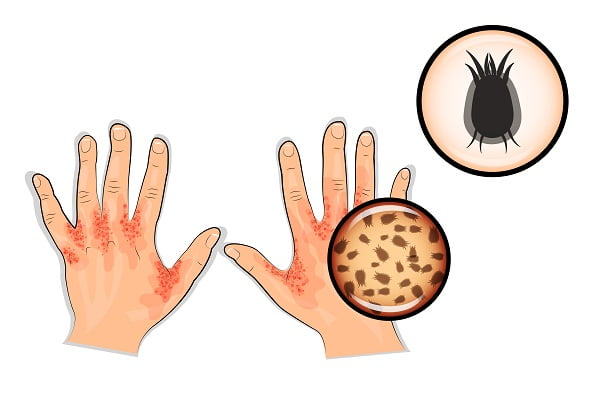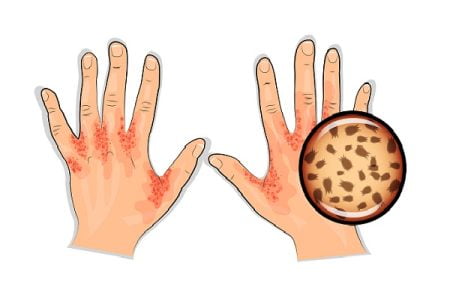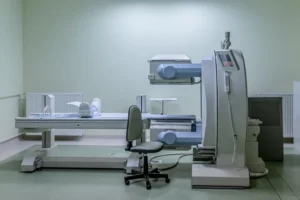Scabies Mite: Can Scabies Mites be Seen?
- Updated on: Jul 12, 2024
- 3 min Read
By
- Published on Oct 3, 2019


What is a scabies mite?
Scabies mite refers to the mites that cause the condition scabies. The mite is scientifically known as Sarcoptes scabiei. These mites burrow into the skin of infected humans. Some of the characteristics of scabies mites are:
- They are small eight-legged parasites.
- They are very tiny, just 1/3 millimeter long.
- They burrow into the skin and produce intense itching, which is worse at night.
- The mites that infest humans are female (the males are about half the size of female).
- The scabies mites can only crawl to travel to another place. They cannot fly or jump.
- They are inactive and cannot move at temperatures below 20 degree C but may survive at these temperatures for a very long time period.
Where does scabies mite live?
Scabies mites burrow under the skin of people affected by the condition. They can live anywhere on the body, but some of their favorite spots include:
- Between the fingers
- The folds of the wrist, elbow and knee
- Around the navel and the waistline
- On the breasts and genitals
- In very young children, the scabies mite can be found on the head, face, neck, palms and soles
Can scabies mites be seen? What does a mite bite look like on a human?
People affected with scabies only carry 10 to 15 mites at any given time. Each mite is very small in size which is less than half a millimeter long. This makes them very difficult to spot. To a naked eye, they may look like some random tiny black dots on the skin.
A microscope or a magnifying glass can easily identify the mites, their eggs and fecal matter. A skin scraping of the infected person is taken and is analyzed under the microscope for the inspection.
More: Scabies Skin Disease: Causes, Symptoms, Diagnosis, Treatment
What is the life cycle of the scabies mite?
The entire life cycle of scabies mite is described in the following points:
- The female mite tunnels into the skin and deposits her eggs on the area.
- Normally, it takes three to ten days for eggs to hatch. Three-legged larvae emerge and make their way to the skin surface. Under the skin, they form shorter burrows which are called “molting pouches”. The larvae stage lasts for three to four days.
- After three to four days, larvae molt into four-legged nymphs.
- The scabies nymph molts again into an adult mite who is ready to breed.
- The adult mites linger in shallow pouches in the skin, feeding off the human host and looking for a mate. Once mite finds a mate, the newly-impregnated louse creates a new burrow of her own and begins to lay eggs.
Scabies mites live anywhere (on the body of the infected person) between one and two months. They lay two or three eggs daily during this time. Only ten percent of these eggs hatch and most of the scabies infections are because of a minuscule number of female scabies mites.
What happens when scabies mite burrows under the skin?
The whole burrowing process and movement of the mites cause intense itching to the infected person. This itching is caused because of a type of allergic reaction to mite proteins.
The symptoms may take time (like four to six weeks after the initial infestation) to show up if the person is having his first encounter to the condition (he has never been exposed to scabies before). While in case of individuals who have been exposed in the past, the symptoms usually show up within a few days.
How long does scabies mite live without a human host? How long can scabies live in furniture?
The scabies mites cannot lay eggs anywhere else but in the burrows created by them. They can only survive for 72 hours in the environment such as in furniture. If the infection remains untreated, it can cause symptoms for years.












